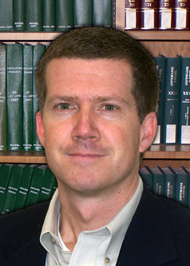Marc T. Hamilton, PhD
Research Description
Functional genomics, exercise, lipid metabolism
Research Description
Multidisciplinary work exposes lab members to a diversity of modern research techniques, and experience with studies involving both animal and human tissues.. Hamilton studies the molecular and physiological mechanisms by which physical inactivity causes chronic metabolic diseases related to poor plasma lipid metabolism (coronary artery disease, Type II diabetes, obesity). Studies have sought to discover the genes and signals linking physical inactivity to disease, especially those processes related to fatty acid metabolism in skeletal muscle.
Using microarray methodologies, Hamilton's laboratory has been characterizing the response of a large percentage of the genome to exercise training, inactivity, and identifying both the transcriptional and post-transcriptional events influenced by fatty acids. Related research has been focused on the provocative finding that there is a large cluster of genes expressed in skeletal muscle that regulate plasma lipid metabolism. Skeletal muscle tissue may be an important site of synthesis for proteins that are secreted into the blood stream and then are important for protecting against metabolic diseases. Microarray work is also beginning to study human muscle during exercise, bedrest and microgravity.
The major emphasis has focused on the molecular mechanisms regulating skeletal muscle lipoprotein lipase (LPL). Using both physiological and molecular approaches, Hamilton is studying the specific cellular factors that so potently "turn-off" LPL activity in skeletal muscle capillaries by as much as 90 percent when young animals become sedentary or old animals age.
Professional Background
- Obtained PhD, University of South Carolina.
- Obtained MA, University of Texas.
Selected Publications
- Hamilton, M.T., J. Etienne, W.C. McClure, B.S. Pavey, and A.K. Holloway. Role of local contractile activity and muscle fiber type on LPL regulation during exercise. Am. J. Physiol. 275 (Endocrinol. Metab. 38):E1016-E1022, 1998.
- Hamilton, M.T., and F.W. Booth. Skeletal muscle adaptation to exercise: 100 years of progress. J. Appl. Physiol. 88:327-331, 2000.
- Bey L, E. Areiqat, A. Sano, and M.T. Hamilton. Reduced lipoprotein lipase activity in postural skeletal muscle during aging. J. Appl. Physiol. 91: 687-692, 2001.
- Campbell, W.G., S.E. Gordon, C.J. Carlson, M.T. Hamilton, and F.W. Booth. Differential global gene expression in red and white skeletal muscle. Am. J. Physiol. (Cell Physiol.) 280(4):C763-8, 2001.
- Booth, F.W., S.E. Gordon, C.J. Carlson, and M.T. Hamilton. Waging War on Modern Chronic Diseases: Primary Prevention through Exercise Biology. J. Appl. Physiol. 88(1):774-787, 2000.




